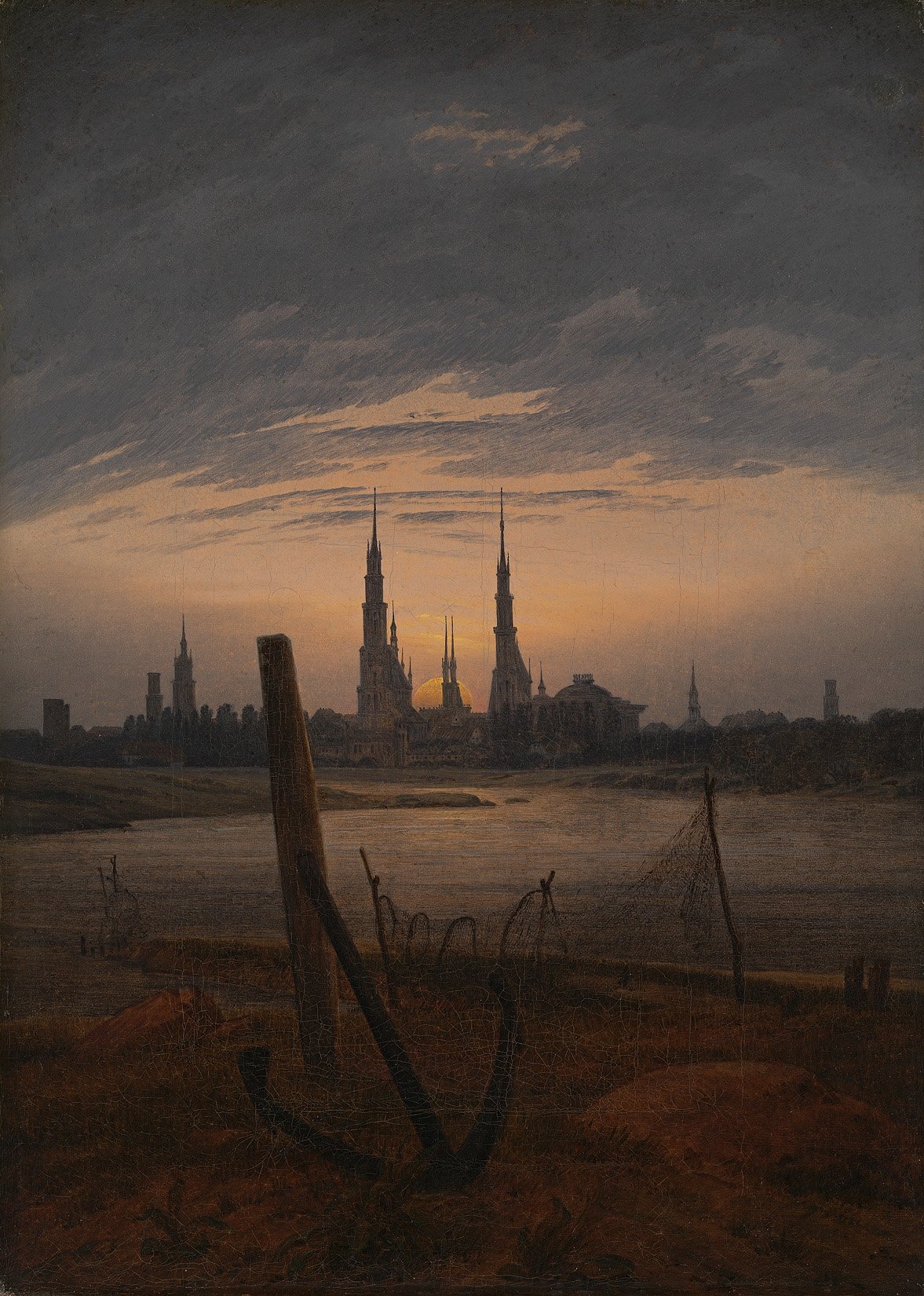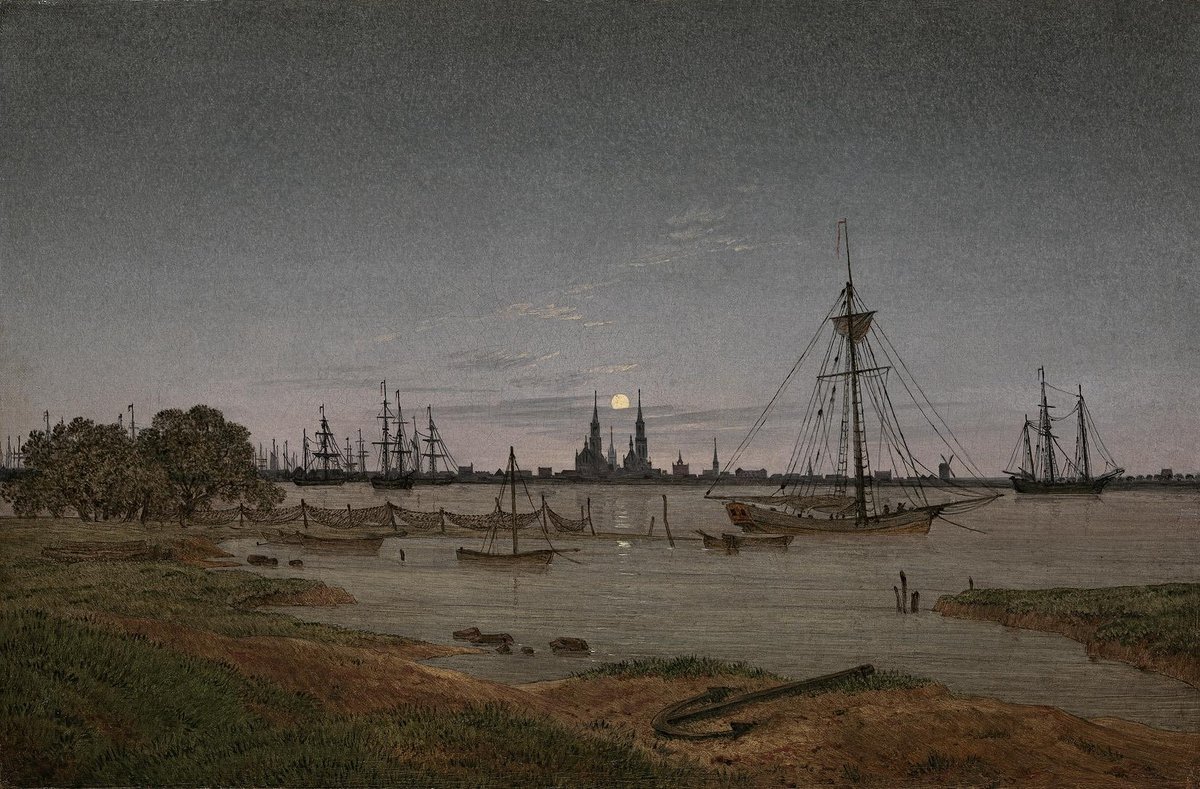Caspar David Friedrich
City at Moonrise, circa 1817

Caspar David Friedrich
City at Moonrise, 1817
Kunst Museum Winterthur, Stiftung Oskar Reinhart, Ankauf, 1931
Foto: SIK-ISEA, Zürich (Philipp Hitz)
Caspar David Friedrich spent most of his life in Dresden. However, he was born in Greifswald on the Baltic Sea. Throughout his life, he remained closely connected to his North German roots and so the sea, harbours and depictions of the shore were among his favourite motifs. It is therefore not surprising that the town depicted here was considered to be his home town. Today, however, scholars agree that this is an ideal city imagined by Friedrich.
Actually, Friedrich was hardly ever interested in creating a topographical reproduction in his work, but rather a specific expression for which he conceived ingenious compositions. We recognise this here in the horizontal and vertical lines that define the composition, most clearly in the symmetry of the moon rising precisely between the church towers. Its upward movement is further emphasised by the long towers and especially by the vertical format. This becomes clear in comparison with the Harbour by Moonlight painted in 1811, another work in Oskar Reinhart’s collection. While the Harbour by Moonlight is probably Friedrich’s first painting in which a harbour is illuminated by a moon, in the City at Moonrise we can recognise his desire to intensify the expression found there. This is testified also by the warmer light, which gives the situation an additional atmospheric quality. Friedrich’s paintings are always atmospheric pictures that want to convey a feeling. Nocturnal scenes and moonlight are particularly suitable for this. These are elements that occupy a central position in Friedrich’s pictorial world and in German Romanticism in general. They stand for a dark, hidden side of life; they lie at the heart of something mysterious, which had become increasingly popular after the rational era of the Enlightenment.

Caspar David Friedrich, Harbour by Moonlight, 1811
Kunst Museum Winterthur, Stiftung Oskar Reinhart, Ankauf, 1934
Foto: SIK-ISEA, Zürich (Philipp Hitz)
Because the moon, as a celestial body, reflects the light of the invisible sun, it was interpreted as a symbol of Christ. It brings the invisible, the divine rays, so to speak, to humanity. Whether the anchor too should be interpreted as a symbol of Christianity and the New Testament, being that it offers stability, is an open question. What is clear is that Friedrich was a religious man who viewed his artistic work as an intermediary between nature and the divine. Thus, it might correspond to the artist’s ideas if, when examining the various visual zones from the shore to the horizon, we were to speak of this life and the hereafter, and interpret the moon, which brings light into the darkness, as a sign of hope. More important, however, than the individual decoding of possible symbols is the realisation of the atmospheric effect and the melancholic yet consoling basic harmony of this gentle moonlight sonata.


